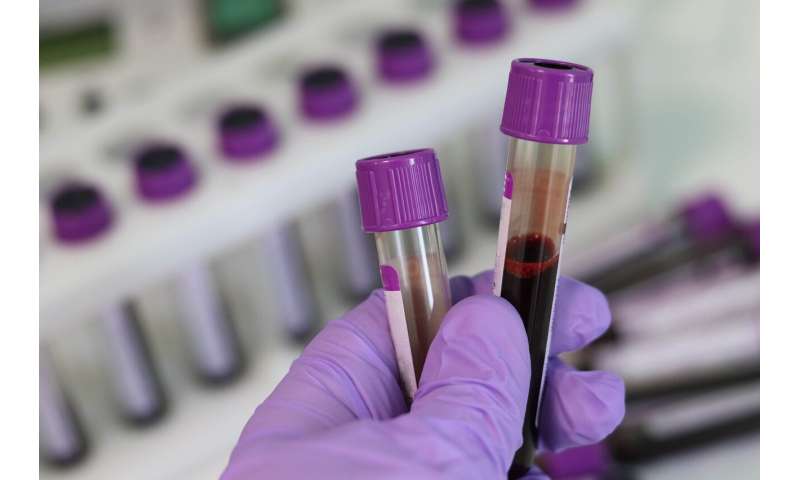
Today, a clinician can order a blood test to check a patient’s cholesterol or hemoglobin A1c levels—biomarkers that help predict an individual’s risk of cardiovascular disease or diabetes, respectively. But despite decades of advances in the understanding of Alzheimer’s disease (AD), a blood test for predicting its risk remains elusive. Imaging scans of the brain and lumbar punctures that collect cerebrospinal fluid can offer diagnoses, but such tests are expensive and cumbersome for patients.
Two years ago, investigators at Brigham and Women’s Hospital reported the development of a blood test for a fragment of the protein tau, a hallmark of AD. Now, that test for levels of N-terminal fragment of tau (NT1) has been evaluated in participants in the Harvard Aging Brain Study (HABS), a cohort of cognitively normal, older adults who are followed closely over time. In Nature Communications, the authors report that baseline NT1 levels in the blood were highly predictive of the risk of cognitive decline and AD dementia.
“Our findings indicate that measuring a tau fragment in plasma can help predict which elderly people are likely to decline and how quickly they are likely to decline,” said corresponding author Dennis Selkoe, MD, co-director of the Ann Romney Center for Neurologic Diseases. “We’re excited because there are currently no commercially available blood tests to predict risk of AD in still-healthy individuals. Having such a blood test allows us to better screen people for enrollment in AD prevention trials and represents progress toward diagnostic tests for AD in medical care.”
Selkoe cautions that a commercial test for routine clinical care likely remains several years away. But for clinical trials that seek to evaluate preventive treatments for AD, such as the large-scale clinical trials led by co-author Reisa Sperling, MD, MMSc, director of the Center for Alzheimer Research and Treatment at the Brigham NT1 levels could be measured before a participant enrolls in a the trial, and potentially also as a longitudinal measure to assess treatment response. The test ultimately represents a far less costly and less invasive alternative to imaging and lumbar punctures.
The current study, led by first author Jasmeer Chhatwal, MD, Ph.D., now an attending physician and scientist in the Massachusetts General Hospital Department of Neurology, evaluated the predictive value of NT1 among 236 cognitively normal participants in HABS. Participants were on average 74 years old when they entered HABS and were followed for an average of five years. Blood samples were collected in the first year.
The research team found that higher levels of NT1 in blood samples taken at the beginning of the trial were strongly associated with future clinical progression. The team divided participants into those with high, medium and low NT1 levels, finding that for the group with the highest levels, the risk of advancing to mild cognitive impairment (MC I) or AD dementia was 2.4-fold. NT1 levels predicted decline across multiple areas of memory, including episodic memory—remembering specific events or experiences such as a person’s birthday or a family visit—and also predicted how fast the participant’s cognition would decline. Imaging data showed that higher baseline NT1 blood levels were associated with elevated brain levels of β-amyloid plaques and the accumulation of tangles of tau—both classical signs of AD.
The authors note that relatively few participants in HABS progressed to AD, an important limitation of this cohort. They found that another brain protein—known as NfL—which has been studied by other groups, may also be associated with cognitive decline, especially among people who already show signs of cognitive deficits. NfL was a less strong predictor than NT1 in the study.
Source: Read Full Article